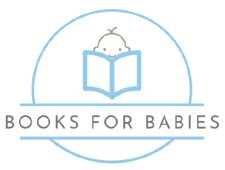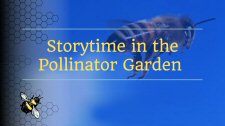Archives
Design a Library Card for Lincoln City Libraries!
- Thursday, 25 May 2023 09:13
 Beginning Friday, May 26, artists age 11 and younger are invited to design a Library Card for Lincoln City Libraries! Print and use this form for creating your design and have a parent or guardian sign it. Then bring it to any Lincoln City Libraries location, or submit it online at lincoln.ne.gov/LibraryCardContest by 5:00 Friday, June 30. You do not need to have a Library card to enter. Only one entry per person. Please see the complete rules included on the form.
Beginning Friday, May 26, artists age 11 and younger are invited to design a Library Card for Lincoln City Libraries! Print and use this form for creating your design and have a parent or guardian sign it. Then bring it to any Lincoln City Libraries location, or submit it online at lincoln.ne.gov/LibraryCardContest by 5:00 Friday, June 30. You do not need to have a Library card to enter. Only one entry per person. Please see the complete rules included on the form.
Books for Babies
- Monday, 09 May 2022 16:36
 Lincoln City Libraries, Bryan Health, and CHI Health have announced the start in July 2022 of a new three-year program in which all babies born at Lincoln area hospitals will receive a free, developmentally appropriate board book. Along with the board book, caregivers will receive an informational pamphlet about the importance of reading aloud with young children. Starting reading at birth will foster strong caregiver bonds and a lifelong love of reading.
Lincoln City Libraries, Bryan Health, and CHI Health have announced the start in July 2022 of a new three-year program in which all babies born at Lincoln area hospitals will receive a free, developmentally appropriate board book. Along with the board book, caregivers will receive an informational pamphlet about the importance of reading aloud with young children. Starting reading at birth will foster strong caregiver bonds and a lifelong love of reading.
Funding for this program was made possible through a Community Health Endowment grant, donations from Bryan Health and CHI Health, as well as private donors.
Reading Tips
- Read aloud for 15 minutes every day for the best brain development benefits.
- Read together with your baby during feedings, in the tub, while waiting in line, or doing tummy time. Anytime, anywhere!
- Put them in your lap, so they can see your face while you read (your expressions will help your baby understand the meaning of the words they’re hearing).
- Let your baby bat at the book, turn the pages, and hold the book if they wish (board books are sturdy and meant to be handled roughly by young readers).
Did you know?
- The American Academy of Pediatrics recommends that you read aloud to your baby starting from birth. Reading is a simple way to help your child build a foundation for reading, learning, and academic success.
- It may seem silly to read to a newborn but the most important period for language and vocabulary growth is in the first two years of life. By age two, children who are read to regularly have better language comprehension, larger vocabularies, and higher cognitive abilities than children who were not read to regularly.
- At age five, children who are read to regularly from birth may know up to one million more words thantheir peers who were not. This is especially important when children start school.
- Reading is an important part of your baby’s development. There is no app to replace your lap when it comes to early brain benefits for babies. Young children, especially those under the age of three, learn through direct human interaction. Reading with your baby helps foster early learning.
What YOU can do
Bond together
You are your baby’s first and most important teacher. When you read with your baby, you bond with your baby. You can foster a love of books through shared reading, close skin-to-skin contact, and nurturing touches as you read.
Talk with your baby
Just hearing your voice helps with a baby’s brain growth and development. Studies show that children learn best when listening to your voice. Be sure to talk to them as you go about your daily routine. As you read, narrate the pictures and make sound effects too.
Relax with a book
Research shows that when you and your baby read together, stress and anxiety go down for BOTH of you.
Storytime in the Pollinator Garden
- Thursday, 14 October 2021 16:08
Learn about how bees and pollinators live and how we can provide habitat for them in our own backyards!
Welcome to the Pollinator Garden video series! This is a fun collaboration between Lincoln City Libraries and the UNL Bee Lab. We have created a series of six videos highlighting honeybees, butterflies and other pollinators and their habitats. To go along with this, starting October 20 all Lincoln City Libraries locations are offering a simple craft of wildflower seed paper to plant and some rocks to make a pollinator water station. There is a limited quantity and families can ask for this craft at their local library’s circulation desk. Watch the videos, check out books from the booklists and learn why pollinators are important and how you can make a difference!
Booklists related to these videos are also available. These videos are also available in a YouTube playlist.
Come look inside a honey bee hive from the comfort of your own home! Courtney and Sheldon from the University of Nebraska-Lincoln Bee Lab will open a honey bee hive and show us what is happening inside, the different roles of honey bees and how they survive the winter.
How does honey get from the hive to the bottle on your table? We will look at processing honey and products made from beeswax. Courtney will show us a step-by-step demonstration of making lotion with beeswax, and provide a recipe so you can make it at home too!
Did you know there are hundreds of other bee species other than the honey bee? Courtney and Sheldon from the UNL Bee Lab will show us some of the habitats of wild bees, the plants they use for homes, and show step by step instructions for making a wild bee hotel to put in your own backyard!
There are wild bees in your own backyard. Learn how to identify them, where they like to live and what they eat. Did you know we rely on pollinators for 35% of our food? Unfortunately, their populations are declining. Come discover how you can help save the bees!
Come dive into the world of butterflies native to Lincoln, NE. We will show what plants are important to butterflies for food, habitat, and how can we help them thrive
Do you want to help pollinators and the ecosystem, or redesign your landscape, but don’t know where to start? Come discover the world of native plants and some great starter species you can plant.
Storytime in the Pollinator Garden – Booklists
- Tuesday, 17 November 2020 10:07
 These booklists, It’s All About the Bees, Products from the Hive, Wild Bees, Native Plants, and Butterflies, were created to accompany episodes of our “Storytime in the Pollinator Garden” virtual storytime series.
These booklists, It’s All About the Bees, Products from the Hive, Wild Bees, Native Plants, and Butterflies, were created to accompany episodes of our “Storytime in the Pollinator Garden” virtual storytime series.
It’s All About the Bees
Children:
Flight of the Honey Bee by Raymond Huber
Give Bees a Chance by Bethany Barton
Beehive by Jorey Hurley
Follow That Bee! A First Book of Bees in the City by Scot Ritchie
Bees Matter by Erika Wassall
Bees by Larry Dane Brimner
Are You a Bee? by Judy Allen and Tudor Humphries
In the Trees, Honey Bees by Lori Mortensen
Busy Buzzers: Bees in Your Backyard by Nancy Loewen
These Bees Count! by Alison Formento
Honeybee: The Busy Life of Apis Mellifera by Candace Fleming
Bees by Deirdre A. Prischmann
The Honeybee by Isabelle Arsenault
Adults:
Keeping the Bees: Why All Bees Are at Risk and What We Can Do to Save Them by Laurence Packer
The Backyard Beekeeper: an Absolute Beginner’s Guide to Keeping Bees in Your Yard and Garden by Kim Flottum
Natural Beekeeping: Organic Approaches to Modern Apiculture by Conrad Ross
Queenspotting by Hilary Kearney
Beekeeping for Dummies by Howland Blackiston
Beginning Beekeeping: Everything You Need to Make Your Hive Thrive! by Tanya Phillips
Honeybee Hobbyist by N. E. Gary
Products from the Hive
Children:
What’s for Lunch? Honey by Pam Robson
Honey In a Hive by Anne Rockwell
Adults:
Beeswax Alchemy by Petra Ahnert
Honey, a Connoisseur’s Guide with Recipes by Gene Opton
Honey, I’m Homemade: Sweet Treats from the Beehive Across the Centuries and Around the World by May Berenbaum
Guide to Bees and Honey by Ted Hooper
Wild Bees
Children:
The Bumblebee Queen by April Pulley Sayre
Adults:
Buzz: the Nature and Necessity of Bees by Thor Hanson
Bees of the World by Christopher O’Toole and Anthony Raw
Our Native Bees by Paige Embry
The Bee Book by Fergus Chadwick, Steve Alton, Emma Sarah Tennant, Bill Fitzmaurice and Judy Earl
Native Plants
Children:
The Hidden Rainbow by Christie Matheson
Flower Talk: How Plants Use Color to Communicate by Sara Levine
Flowers Are Calling by Rita Gray
Adults:
Native Plants of the Midwest by Alan Branhagen
Butterfly Gardening with Native Plants by Christopher Kline
The Midwestern Native Garden: Native Alternatives to Nonnative Flowers and Plants: An Illustrated Guide by Charlotte Adelman
Bringing Nature Home: How You Can Sustain Wildlife with Native Plants by Douglas W. Tallamy
Gardening with Prairie Plants: How to Create Beautiful Native Landscapes by Sally Wasowski
Go Native! Gardening with Native Plants and Wildflowers in the Lower Midwest by Carolyn Harstad
Easy Care Native Plants: A Guide to Selecting and Using Beautiful American Flowers, Shrubs, and Trees in Gardens and Landscapes by Patricia A. Taylor
100 Plants to Feed the Bees: Provide a Healthy Habitat to Help Pollinators Thrive
The Pollinator Victory Garden by Kim Eierman
Planting for Honeybees: The Grower’s Guide to Creating a Buzz by Sarah Wyndham Lewis
The Bee-Friendly Garden by Kate Frey and Gretchen LeBuhn
Butterflies
Children:
Butterfly Story by Anca Hariton
A Place for Butterflies by Melissa Stewart
Butterflies in the Garden by Carol Lerner
Adults:
Birds, Bees, and Butterflies: Bringing Nature into Your Yard and Garden by Nancy J. Hajeski
Storytimes To Go
- Thursday, 15 October 2020 16:36
Storytimes To Go were started during the height of the pandemic. Due to low usage, we are discontinuing this service. If you would like help selecting books for your at-home storytimes, staff at any of our Library locations will be happy to help.
